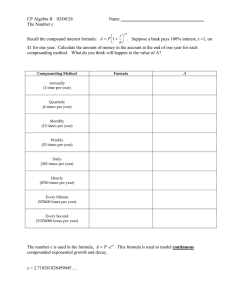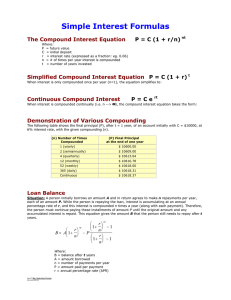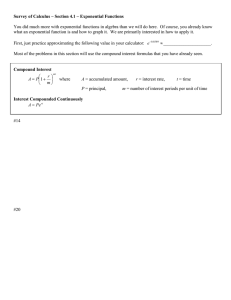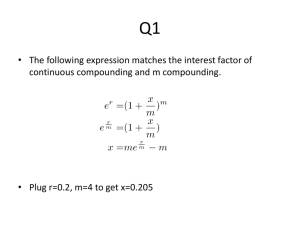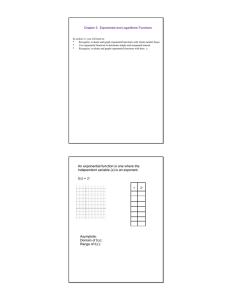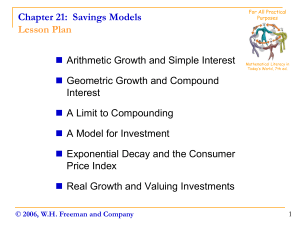Activity 4.8 Compound Interest ab ae
advertisement
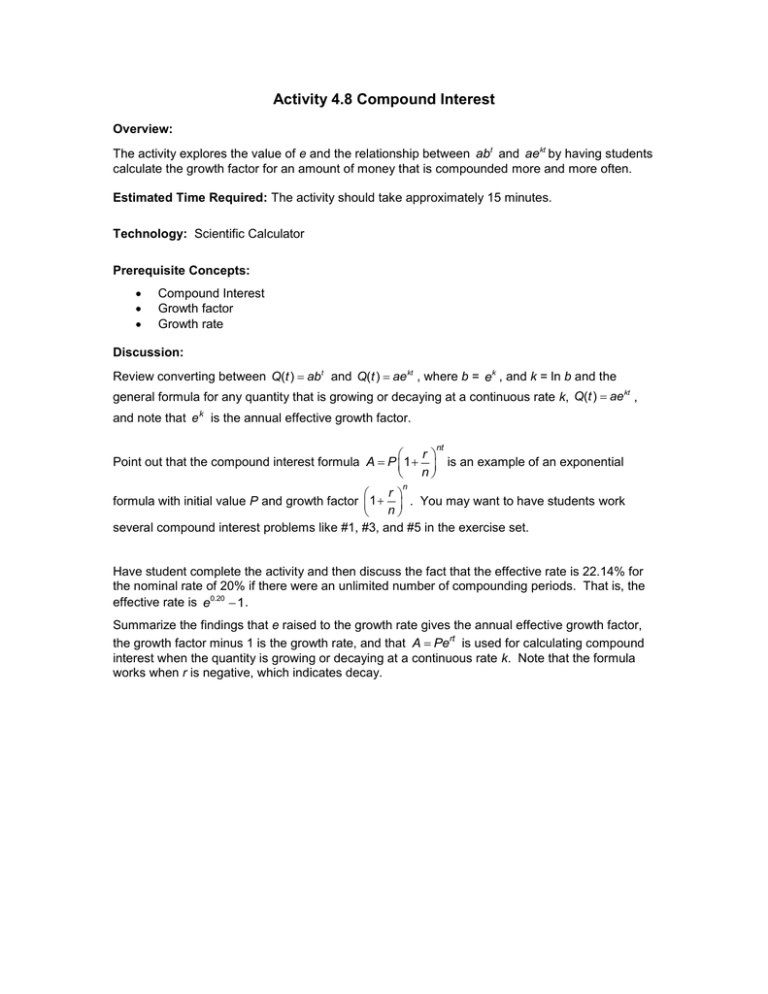
Activity 4.8 Compound Interest Overview: The activity explores the value of e and the relationship between abt and aekt by having students calculate the growth factor for an amount of money that is compounded more and more often. Estimated Time Required: The activity should take approximately 15 minutes. Technology: Scientific Calculator Prerequisite Concepts: Compound Interest Growth factor Growth rate Discussion: Review converting between Q(t ) abt and Q(t ) ae kt , where b = ek , and k = ln b and the general formula for any quantity that is growing or decaying at a continuous rate k, Q(t ) ae kt , and note that e k is the annual effective growth factor. nt r Point out that the compound interest formula A P 1 is an example of an exponential n n r formula with initial value P and growth factor 1 . You may want to have students work n several compound interest problems like #1, #3, and #5 in the exercise set. Have student complete the activity and then discuss the fact that the effective rate is 22.14% for the nominal rate of 20% if there were an unlimited number of compounding periods. That is, the effective rate is e0.20 1. Summarize the findings that e raised to the growth rate gives the annual effective growth factor, the growth factor minus 1 is the growth rate, and that A Pert is used for calculating compound interest when the quantity is growing or decaying at a continuous rate k. Note that the formula works when r is negative, which indicates decay. Activity 4.7 Continuous Growth and the Number e Because any exponential function can be written as Q t abt or as Q t aekt , where b e k and k ln b , the two formulas represent the same function. We call b the growth factor, and we call k the continuous growth rate. Consider the classic interest problem of an account earning a nominal interest rate of 20% per year, being compounded many times per year. Find the growth factor for the different number of compounding periods in a year and enter them in the following table: Number of Compounding Periods 1 10 100 1000 10000 Growth Factor What happens as we continue increasing the number of compounding periods? Does there appear to be a maximum possible effective rate we can earn? If so, what is it? What is the relationship between e and the growth factors we calculated above?

